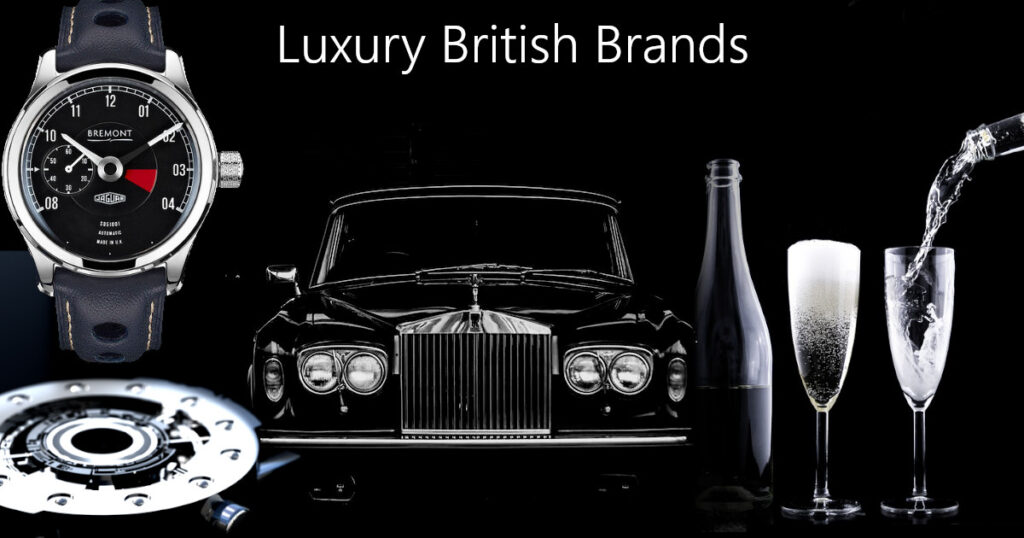
The watch in the bottom left of the above image, is our Techno-circle #1 watch.
Sections Of This Article
- What does luxury really mean?
- The history of luxury: how it has evolved through the ages
- British luxury brands
- Luxury British watch brands
- Is art a luxury?
- Is unconstrainedtime a luxury British brand?
Introduction
As usual with my articles, as well as presenting a selection of British luxury brands and luxury British watch brands, I will be looking more deeply into the meaning and evolution of the concept of luxury, looking at what it really means, and how that has changed significantly over time.
There are a lot of words like “luxury” which people think they know the meaning of, but which the same people would find difficult to define clearly when asked. I think it’s worth investigating such concepts at a deeper level, so you can think more clearly about such things, and make up your own mind rather than believing what others say on the matter.
What Does Luxury Really Mean?
The word “luxury” has ancient roots, tracing back to the Latin term “luxuria,” which originally conveyed excess and extravagance. In classical Rome, “luxuria” was often associated with unrestrained behaviour or excessive consumption:
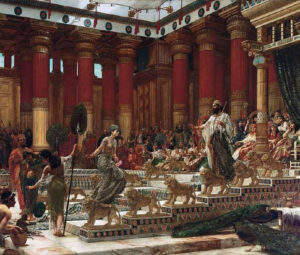
Over time, the meaning evolved, and by the late Middle Ages, “luxury” began to signify indulgence in pleasure and refinement. The Old French term “luxurie” further shaped its linguistic journey. As societies transformed, so did the perception of luxury, evolving into a concept encompassing not only opulence but also exclusivity and quality. The word’s rich historical lineage reflects the dynamic evolution of societal values and aspirations.
Luxury transcends mere material opulence; it embodies an experience of indulgence, exclusivity, and refinement that surpasses basic necessity. Beyond expensive possessions, luxury has traditionally encapsulated a commitment to exceptional quality, meticulous craftsmanship, and a heightened sense of aesthetics. It symbolizes a lifestyle marked by comfort, sophistication, and the pursuit of pleasure. In its essence, luxury reflects a unique blend of rarity and desirability, offering an escape from the mundane and a celebration of the extraordinary. It’s a subjective concept, shaped by individual aspirations as well as the evolution of societies, yet universally recognized as an embodiment of the finer things in life.
Things that count as luxury these days include Haute couture clothing, high quality jewellery and accessories, high-end watches (like the MB&F HM11 “Architect” below):
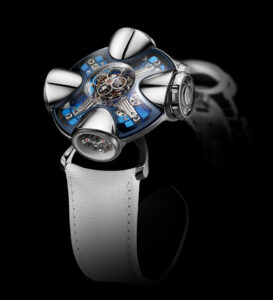
. . . high-end automobiles, yachts, fine wine, expensive homes, and private jets. Dimensions to luxury include tradition, modesty, eccentricity and sensuality, as well as elitism which implies that luxury is comparative more than absolute.
I’ll go into details of the history of luxury in the next section, but I’ll just briefly mention here that the concept has evolved hugely over the centuries, with things that were very much a luxury only a few generations ago now being accepted as a necessity, like automobiles.
While luxury used to be available only to a very small sector of society, these days the experience of luxury can be available to most people in the developed world if they are smart with money, enjoying the finer things in life in moderation. This is shown by the fact that 27% of purchases of luxury items in the US are made by people whose household income is less than half the average.
While luxury used to refer mainly to high quality and expensive goods, it is now seen being more emotionally based, evoking feelings of happiness and positivity, prestige, confidence, and well-being. It can also be said that some of the most significant luxuries in life are the things which money can’t buy, such as the moments we are living life to the full. The brands people see as luxury are perceived as not just high quality, but also authentic and timeless, trustworthy and traditional.
As more and more of the practical necessities of life are now taken for granted, people in general have a lot more focus on intangible abstract concepts.
Luxury plays a role in signalling to others one’s social status, success, taste, and achievements. Buying luxury goods has a positive impact on self-esteem, but can also be part of the competitive nature of society, keeping up with one’s peers, which increased dramatically when people moved away from living in proximity to their extended family.

Some people’s way of living a lavish lifestyle can be excessively materialistic, involving excess and waste, which can have negative impacts on the environment and society as a whole. Luxury brand consumers are perceived as less generous, prosocial or warm.
The History Of Luxury: How It Has Evolved Through The Ages
Luxury has undergone a fascinating evolution through its history, reflecting the changing values, societal structures, and technological advancements of different eras. The concept of luxury is inherently subjective, shaped by cultural, economic, and individual perspectives. From ancient civilizations to the modern era, the definition and manifestations of luxury have transformed, offering insights into the complexities and evolutions of human desires and aspirations.
In ancient civilizations, luxury was often synonymous with excess, extravagance, and rare materials. Pharaohs adorned themselves with precious metals and gemstones, emphasizing their divine status and authority. Similarly, the Roman Empire witnessed opulent displays of wealth through lavish feasts:
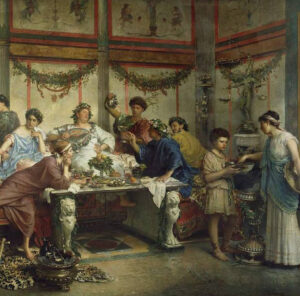
. . . intricate clothing, and elaborate architecture. Luxury in these early societies were symbols of power, social hierarchy, and often served as a means of differentiation between the ruling class and the rest of the population.
The Middle Ages saw a shift in the perception of luxury as societies became more feudalistic. Nobility flaunted their status through sumptuous garments, finely crafted jewellery, and extravagant banquets. During this time, luxury became a tool for social stratification and a means to reinforce hierarchical structures. The Renaissance period witnessed a revival of classical ideals, and luxury became intertwined with art, culture, and intellectual pursuits. Exquisite craftsmanship, intricate designs, and cultural refinement became markers of luxury, with a growing emphasis on individual taste and aesthetic expression.
The Industrial Revolution in the 18th and 19th centuries brought about significant changes in the production and accessibility of what had previously been luxury goods:
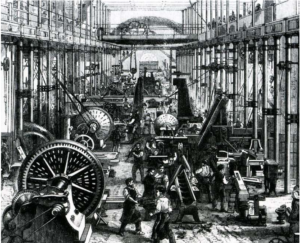
Mass production allowed for the replication of once-exclusive items, making luxury more attainable for the emerging middle class. This era also witnessed the birth of luxury brands, which began to establish themselves as symbols of prestige and quality.
The industrial revolution also resulted in the significant use of marketing, which became necessary when supply exceeded demand for most types of products for the first time. Marketing initially often focused on practical aspects of products, such as accuracy and reliability of watches. But as marketing, and societies, evolved in an increasingly competitive context, the concept of luxury shifted from being genuine high quality craftsmanship, to being more about perceived value, with advertising consisting of increasing degrees of exaggeration and luxury becoming more about marketing than reality.
The 20th century saw a shift towards a more democratic definition of luxury, influenced by changing societal values and economic structures. The emergence of consumer culture and the rise of the middle class fuelled the demand for accessible luxury, challenging traditional notions of exclusivity. Luxury became more about lifestyle, experiences, and the intangible elements of status.
In the 21st century, luxury has taken on new dimensions with the further developments of technology and globalization. Digital platforms and social media have democratized the conversation around luxury, allowing for a more diverse and inclusive definition. Sustainability, ethical practices, and authenticity have become essential considerations in the modern luxury landscape, reflecting a growing awareness of social and environmental responsibility.
Luxury has, to some extent, transformed from revered brands as symbols of exclusivity and craftsmanship to mostly mass-marketed entities driven by profit margins (although there are exceptions). On the other hand, there is a recent resurgence of interest in genuine artisan-made objects, such as these art jewellery pieces below (although many items marketed as such are actually mass-produced):
Counterfeiting has emerged as a significant threat to the luxury industry, with the widespread availability of counterfeit goods not only eroding the exclusivity of luxury brands but also posing economic challenges and risks to consumer safety.
Many luxury brands have expanded their product lines to cater to a broader market. This strategy, while boosting short-term profits, often comes at the cost of diluting the brand’s image and compromising on the quality that defines its prestige. There is a significant paradox of luxury becoming more accessible, thereby losing its lustre as a symbol of rarity and distinction which formed part of its original definition.
Younger consumers and luxury go hand in hand, with the majority of luxury consumers now being millennials and Gen Z who are purchasing luxury goods around four years earlier than millennials did at their age.
British Luxury Brands
ADKN, an emerging clothing brand, is making waves with its innovative designs and commitment to sustainability. Known for its contemporary and eco-friendly approach, ADKN blends style and conscience, offering a unique perspective in the fashion industry.
Afina London is synonymous with luxury swimwear and resort wear. Renowned for its exquisite craftsmanship and attention to detail, Afina London’s pieces are a fusion of sophistication and bold design. The brand caters to those seeking high-end, fashion-forward beachwear.
A powerhouse in the world of fashion, Alexander McQueen:
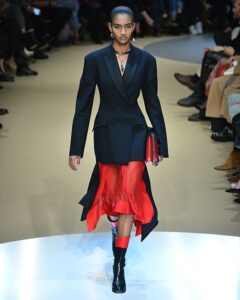
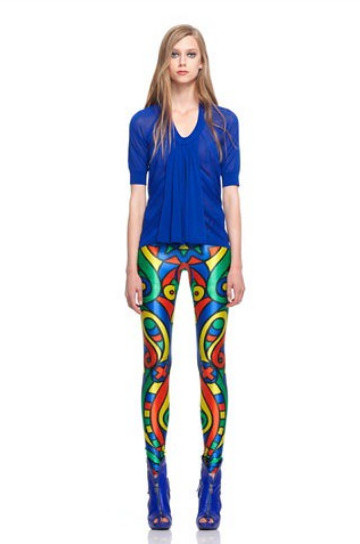
. . . stands for avant-garde designs and impeccable tailoring. The brand, named after its visionary founder, Lee Alexander McQueen, is celebrated for its daring and often theatrical runway presentations, pushing the boundaries of fashion.
Asprey, a British luxury brand with a heritage dating back to 1781, is synonymous with exceptional craftsmanship and timeless elegance. Specializing in jewellery, leather goods, and silverware, Asprey remains a symbol of refined taste and opulence.
Barbour:
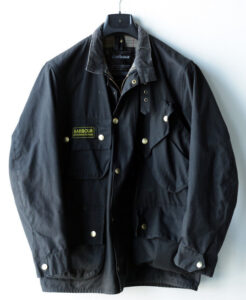
. . . a quintessentially British brand, has been a stalwart in the world of outerwear for over a century. Renowned for its durable waxed jackets and functional yet stylish clothing, Barbour seamlessly blends tradition with contemporary fashion, appealing to both urban and rural lifestyles.
Bianca Saunders brings a fresh perspective to menswear, challenging conventional notions of masculinity. Known for her gender-fluid designs and explorations of identity, Saunders’ eponymous brand is at the forefront of a new wave in contemporary fashion.
Boodles, a British luxury jeweller, is synonymous with exquisite diamonds and timeless designs. With a history dating back to 1798, Boodles has earned a reputation for crafting breath-taking jewellery pieces that embody sophistication and timeless beauty.
Budd, a distinguished shirt-maker based in London, is celebrated for its exceptional craftsmanship and attention to detail. With a history dating back to 1910, Budd continues to create bespoke shirts of the highest quality, combining traditional techniques with a modern aesthetic.
Burberry:
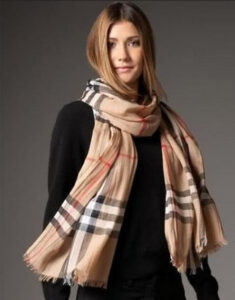
. . . an iconic British luxury brand, is globally recognized for its trench coats, distinctive check pattern, and timeless fashion. With a heritage spanning over 150 years, Burberry seamlessly combines classic elegance with a modern sensibility, maintaining its status as a symbol of British style.
Christopher Raeburn:

. . . is a British designer known for his sustainable and innovative approach to fashion. Renowned for upcycling military materials into contemporary designs, Raeburn’s brand reflects a commitment to ethical practices and environmental consciousness while maintaining a high level of style and functionality.
Craig Green has carved a niche in the fashion industry with his avant-garde menswear designs. Blurring the lines between fashion and art, Green’s creations often feature intricate detailing and conceptual silhouettes, earning him acclaim for his unique and boundary-pushing aesthetic.
Emma Willis is a distinguished name in the world of luxury shirt-making. With a focus on craftsmanship and quality, the brand produces bespoke and ready-to-wear shirts known for their impeccable tailoring and attention to detail, catering to a clientele with a taste for timeless elegance.
Ettinger, a heritage brand specializing in luxury leather goods, epitomizes British craftsmanship. Established in 1934, the brand is celebrated for its handcrafted wallets, accessories, and travel items, combining traditional skills with a modern aesthetic.
Floris, a prestigious perfumery established in 1730, has been a purveyor of fine fragrances for generations. With a rich history and a Royal Warrant, Floris is synonymous with craftsmanship, offering an array of exquisite scents that capture the essence of timeless sophistication.
Fortnum & Mason:

. . . founded in 1707, is a quintessentially British luxury department store renowned for its exceptional food and gifts. The brand’s iconic hampers, teas, and gourmet delights reflect a commitment to quality and tradition, making it a symbol of British refinement.
Grace Wales Bonner is a fashion designer celebrated for her exploration of identity and cultural heritage. Known for blending diverse influences into her menswear collections, Bonner has received acclaim for her thoughtful and progressive approach to fashion.
Grenson, founded in 1866, is a heritage footwear brand recognized for its craftsmanship and commitment to quality. Known for its classic yet contemporary designs, Grenson’s handmade shoes continue to be a symbol of enduring style and British shoe making tradition.
Jimmy Choo:
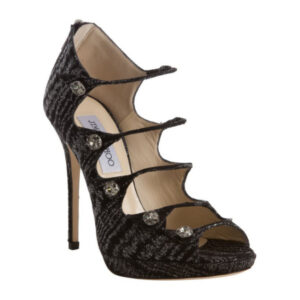
. . . is synonymous with luxury footwear and accessories. Founded in 1996 in Hackney, East London, the brand is known for its glamorous designs, craftsmanship, and red-carpet appeal. With a focus on elegance and sophistication, Jimmy Choo has become a global icon in the world of high-end fashion.
Katharine Hamnett is a trailblazer in sustainable and ethical fashion. Renowned for her iconic slogan t-shirts and commitment to environmental and social issues, the brand has been influencing the fashion industry since the 1980s.
Komodo is a pioneer in sustainable fashion, committed to eco-friendly and ethical practices. With a focus on organic fabrics and fair trade production, Komodo offers stylish, contemporary clothing while promoting environmental consciousness.
Maison Margiela, founded by the elusive Martin Margiela, is renowned for its avant-garde and deconstructed designs. The brand challenges traditional fashion norms, pushing boundaries and redefining the concept of luxury through innovative and conceptual creations.
Molly Goddard is celebrated for her whimsical and voluminous designs, particularly her signature tulle dresses. The brand embodies a playful and feminine aesthetic, capturing the imagination of fashion enthusiasts who appreciate a blend of nostalgia and modernity.
Mulberry is a British luxury brand recognized for its craftsmanship and leather goods. Founded in 1971, Mulberry’s iconic bags, including the Bayswater and Alexa, showcase a perfect blend of tradition and contemporary style, making them enduring classics in the fashion world.
Oliver Spencer is synonymous with understated British elegance. Focusing on quality fabrics and meticulous craftsmanship, the brand creates versatile menswear that seamlessly blends comfort with style, appealing to those who appreciate timeless, well-made clothing.
Paul Smith:
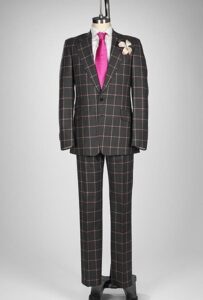
. . . is a British fashion icon known for his classic yet quirky designs. With a love for bold colours and patterns, the brand has been a staple in menswear since the 1970s. Paul Smith’s unique blend of tradition and modernity continues to captivate fashion enthusiasts globally.
Pickett is a luxury brand specializing in leather goods and accessories. Founded in 1988, Pickett combines traditional craftsmanship with contemporary design, offering a range of high-quality products that reflect a refined and sophisticated aesthetic.
PJ Pan is synonymous with luxury loungewear and sleepwear. With a focus on comfort and timeless design, the brand creates elegantly crafted nightwear that merges style and relaxation, making it a go-to choice for those who appreciate both comfort and luxury.
PRISM is a contemporary eyewear brand known for its stylish and functional sunglasses. With a focus on timeless design and high-quality materials, PRISM creates eyewear that seamlessly combines fashion with practicality, appealing to those who seek both style and UV protection.
Rixo is a London-based brand celebrated for its vintage-inspired, feminine designs. Known for its bold prints and flattering silhouettes, Rixo captures a sense of nostalgia while offering modern and versatile pieces that resonate with fashion-forward individuals.
Sanyukta Shrestha is a sustainable bridalwear brand known for its eco-friendly practices and ethereal designs. Focused on creating timeless and elegant wedding dresses, the brand incorporates organic fabrics and ethical production methods, reflecting a commitment to both style and environmental responsibility.
Saul Nash is a contemporary menswear brand that seamlessly blends fashion with performance. Known for his innovative approach to sportswear, Nash’s designs often incorporate dance-inspired elements, resulting in a unique and dynamic aesthetic that challenges traditional notions of athletic apparel.
SILOU is a luxury activewear brand that combines style and functionality. With a focus on creating versatile and high-performance pieces, SILOU’s designs seamlessly transition from the gym to everyday life, catering to individuals who prioritize both fitness and fashion.
Sister Organics is a sustainable and ethical clothing brand that specializes in vintage-inspired, handmade garments. With a commitment to transparency and fair labour practices, the brand offers timeless pieces that resonate with those who prioritize conscious consumerism.
Smythson is a British heritage brand renowned for its luxurious leather goods and stationery. Established in 1887, Smythson has long been associated with craftsmanship and timeless design, creating coveted items such as high-quality notebooks, diaries, and leather accessories.
Stay Wild Swim is a sustainable swimwear brand that embraces eco-friendly materials and ethical production. With a commitment to both style and environmental conservation, the brand offers chic and functional swimwear that resonates with those who prioritize sustainable fashion choices.
Stella McCartney:

. . . is a pioneer in sustainable and cruelty-free fashion. Known for her commitment to ethical practices, McCartney’s eponymous brand creates modern and sophisticated designs using sustainable materials, making it a trailblazer in the eco-conscious fashion landscape.
Ted Baker is a British lifestyle brand known for its quirky and distinctive style. Combining traditional tailoring with contemporary designs, Ted Baker offers a wide range of clothing and accessories, appealing to those who appreciate a playful yet sophisticated aesthetic.
Temperley London is synonymous with romantic and bohemian-inspired designs. Known for its intricate detailing and feminine silhouettes, the brand creates luxurious and timeless pieces that cater to individuals with a penchant for ethereal and elegant fashion.
The Vampire’s Wife is a cult-favourite brand celebrated for its romantic and vintage-inspired dresses. Founded by Susie Cave, the brand’s uniquely feminine aesthetic has garnered a dedicated following, with its pieces often seen on red carpets and in fashion editorials.
Victoria Beckham‘s eponymous brand is a reflection of her minimalist and sophisticated personal style. Known for its clean lines and modern silhouettes, the brand offers a range of ready-to-wear, accessories, and eyewear, appealing to those who appreciate timeless elegance.
Vivienne Westwood:
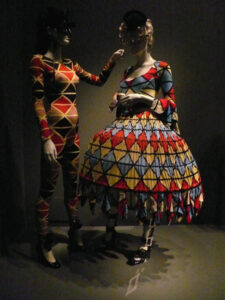
. . . is an iconic British fashion designer known for her punk-inspired and avant-garde designs. A pioneer of the punk movement, Westwood continues to push boundaries with her bold and unconventional creations, making her a symbol of rebellion and individuality in the fashion world.
Some British luxury brands who are perceived as very “British” can do very well in the US, such as Turnbull & Asser, Thom Sweeney, Smythson and Penhaligon’s.
Luxury British Watch Brands
Aera is a contemporary British watch brand that focuses on sustainability and innovation. With a commitment to eco-friendly materials and ethical practices, Aera creates minimalist timepieces with a modern aesthetic. The brand’s dedication to environmental responsibility sets it apart in the world of watchmaking.
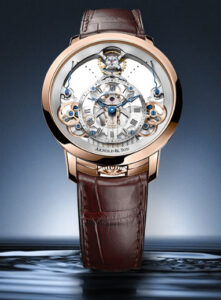
. . . is a historic British watchmaking brand with roots tracing back to the 18th century. Revered for its precision and craftsmanship, Arnold & Sons creates exquisite timepieces that often pay homage to the brand’s illustrious heritage. The watches are characterized by classical elegance and technical innovation.
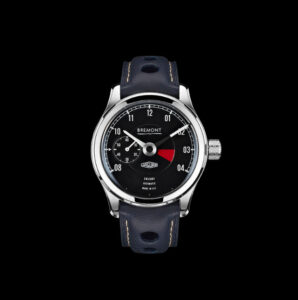
. . . is an award winning British luxury watch brand founded by brothers Nick and Giles English in 2002. Known for its aviation-inspired timepieces, Bremont watches are celebrated for their precision, durability, and distinctive design. The brand often incorporates materials with historical significance, such as salvaged steel from HMS Victory, adding a unique storytelling element to each watch.
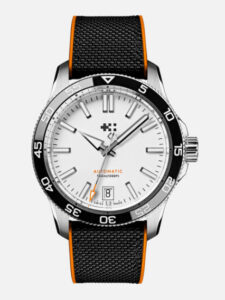
. . . is a British watch brand known for offering high-quality timepieces at accessible price points. The brand prides itself on its Swiss-made movements and designs that strike a balance between classic elegance and modern sophistication. Christopher Ward watches appeal to those seeking luxury without the premium price tag.
Dent, a historic British watchmaker, boasts a legacy dating back to 1814. Renowned for its precision and craftsmanship, Dent has contributed significantly to the world of horology. The brand gained global recognition for creating the famous Big Ben clock and has continued to produce exceptional timepieces with a commitment to accuracy and timeless design, with some of their watch designs being linked to Big Ben and the Houses of Parliament.
Elliot Brown is a contemporary British watch brand known for its durable and versatile timepieces. Founded by Ian Elliot and Alex Brown, the brand emphasizes quality and reliability, producing watches designed to withstand the rigors of both daily life and extreme outdoor activities.
Farer is a British designed watch brand (although made in Switzerland) that combines vintage-inspired design with modern craftsmanship. Founded on the principles of adventure and exploration, Farer’s timepieces reflect a sense of wanderlust and discovery. The brand focuses on creating unique, colourful dials and robust watches that appeal to those with an adventurous spirit.
Garrick is a contemporary British watch brand based in Norfolk that combines traditional craftsmanship with modern aesthetics. Known for its handcrafted timepieces, Garrick watches often feature intricate dial work and bespoke finishing, showcasing a commitment to artisanal techniques and attention to detail. They make a maximum of 50 watches a year, prioritizing quality and exclusivity over mass production.
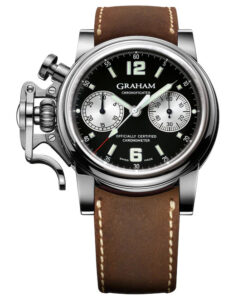
. . . is a British watch brand with a rich history dating back to the 18th century. Today, the brand is renowned for its avant-garde and technically advanced timepieces. Inspired by the legacy of George Graham, a pioneering watchmaker, Graham watches often feature innovative complications and bold designs, appealing to enthusiasts who appreciate a blend of tradition and modernity. Designed in London, they now have watchmaking facilities and movements made in Switzerland.
Loomes & Co. is a heritage watchmaker with roots dating back to the 17th century. Known for its traditional English craftsmanship, Loomes & Co. combines classic design with precision engineering, now making in-house movements. The brand continues to produce high-quality, handcrafted watches that pay homage to its rich horological heritage.
Marloe Watch Company is a modern British brand known for its stylish and affordable mechanical watches. Founded in 2015, Marloe emphasizes the fusion of classic design with contemporary aesthetics, creating timepieces that capture the essence of traditional watchmaking while catering to a diverse audience.
Mr Jones Watches (Their Tadaima shown below):
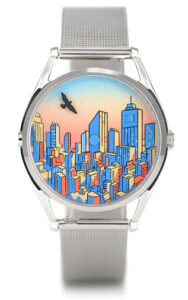
. . . is a quirky and creative British brand that brings an artistic flair to watchmaking. Renowned for its unconventional designs and limited-edition releases, Mr Jones Watches collaborates with artists to create timepieces that are as much works of art as they are functional accessories. Like UnconstrainedTime, Mr. Jones watches was founded by a fine artist.
Paulin is a Glasgow-based watch brand that combines modern design with traditional craftsmanship. Founded by sisters, the brand creates minimalist and stylish watches inspired by both Scottish heritage and contemporary fashion. Paulin’s commitment to accessible luxury makes its timepieces popular among a diverse audience.
Pinion is a British watchmaker recognized for its distinctive and minimalist timepieces. Inspired by mid-20th-century design, Pinion creates watches that embody simplicity, durability, and functionality. The brand’s commitment to quality materials and craftsmanship results in timeless pieces that resonate with those who appreciate understated elegance.
Roger W. Smith, a contemporary master watchmaker, is celebrated for his handcrafted, bespoke timepieces. Trained under the legendary George Daniels, Smith (OBE) creates each watch individually, showcasing exceptional skill and attention to detail. The brand represents the pinnacle of British watchmaking, combining traditional craftsmanship with modern innovation.
Schofield is a British watch brand that emphasizes craftsmanship, design, and exclusivity. Known for its limited production and attention to detail, Schofield watches often feature minimalist designs with a focus on high-quality materials. The brand’s commitment to individuality and precision makes its timepieces highly coveted among watch enthusiasts.
Studio Underd0g is a British watch brand that embraces a fusion of art and horology. Known for its avant-garde and unconventional designs, the brand pushes the boundaries of traditional watchmaking, creating unusually coloured timepieces
Vertex (their MP45 Heritage A shown below):
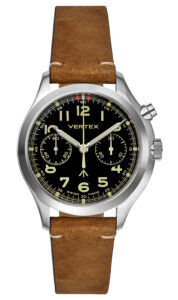
. . . is a historic British watch brand that gained prominence during World War II for supplying military watches to British forces. Recently revived, Vertex continues its tradition of producing robust and purpose-built timepieces. The brand’s modern iterations honour the military heritage while incorporating contemporary design elements.
William Wood is a British watch brand founded by Jonny Garrett, inspired by his grandfather’s legacy as a firefighter. The brand is recognized for its unique approach to design, incorporating reclaimed materials from British firefighting equipment into the watches. William Wood timepieces exude a blend of rugged durability and homage to a noble profession.
Is Art A Luxury?
The question of whether art is a luxury is a complex and subjective matter that hinges on various perspectives and interpretations. Historically, art has been associated with opulence, patronage, and exclusivity, suggesting a connection between artistic creations and luxury. The affluent elite, throughout different periods, have commissioned and collected artworks as an expression of their status symbols, contributing to the perception of art as a luxury commodity. For details of the differences between art and design etc. see my post “Are watches art?“
However, such a perspective oversimplifies the broader role of art in society, and has evolved significantly, especially in recent times. While certain artworks may command astronomical prices at auctions and be displayed in prestigious galleries, the essence of art extends beyond monetary value. Art serves as a powerful medium for expression, reflection, and communication, providing a unique lens through which individuals can explore emotions, ideas, and cultural narratives. In this sense, art becomes a form of human expression and communication that is accessible to anyone, transcending socio-economic boundaries.

These days art is everywhere, on TV and social media, in books and movies, on websites, billboards etc. While humans could theoretically exist without art, for life to have any meaning beyond survival and working to earn money, the purpose of our lives cannot help but be influenced by the art all around us. “Art isn’t optional for humans.” John Green, The Anthropocene Reviewed.
Artistic movements around the beginning of the 20th Century, like the Arts and Crafts Movement, Art Nouveau:
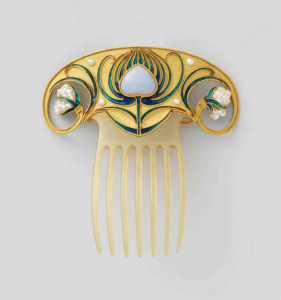
. . . and Bauhaus tried to say that art and craft are the same thing, by ignoring the defining characteristics of art, but did help the democratization of art which challenges the notion of it being solely a luxury. With the advent of digital platforms, street art (below), and community-driven initiatives, art has become increasingly inclusive and diverse, reaching a broader audience. Many artists create and share their work through social media, public spaces, and grassroots movements, emphasizing the idea that art is not reserved for the elite but is a universal means of expression in the contemporary developed world.

Moreover, the intrinsic value of art lies in its ability to evoke emotions, provoke thoughts, and contribute to cultural enrichment. Museums, galleries, and public art installations play a vital role in fostering accessibility, making art an essential part of societal development and well-being.
Art can be seen as a universal language, accessible to all, capable of enriching lives and fostering a deeper understanding of the human experience. In this broader context, it is evident that art is not merely a luxury but a profound and integral aspect of the current human experience. Art is an essential part of our culture. See: “The Universal Language of Art” by the Harvard Crimson.
There is an interesting phenomenon that occurs when luxury becomes a normal occurrence . . . it gradually becomes accepted as a necessity. To a significant degree, art has evolved from a luxury to a “need” and is now considered a necessary part for our mental well-being. Automobiles used to be perceived as luxuries but are not anymore, with 62 percent of “poor” households in the US now owning a car (although that also says something about the current definition of “poor”).
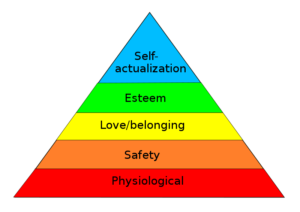
Art is the top of Maslow’s Hierarchy of needs (above), above esteem, love and belonging, safety and survival. When those other needs are in place, art can be part of the self-actualization which lies at the top of this hierarchy, and is about becoming the best version of oneself.
Is UnconstrainedTime A Luxury British Brand?
We’re a new British microbrand.
We create small, numbered quantities of wearable sculptures that transform watch collecting into fine art collecting, bringing museum-worthy creativity to your wrist at accessible luxury prices.
We fit the authentic definition of art far more than any other watch brand we are aware of. And we are, arguably, the first conceptual art jewellery based watch brand.
Our watches are seen as “entry-level luxury” in terms of the microbrand price range. Each piece not only represents artistic vision but becomes uniquely yours through personalised material selection. Your choice of metals transforms these sculptures, presented as small numbered editions, into individually crafted expressions that reflect both the creator’s artistry and your personal aesthetic.
They are individually made items, and don’t use mass-produced movements or parts made for anyone else:
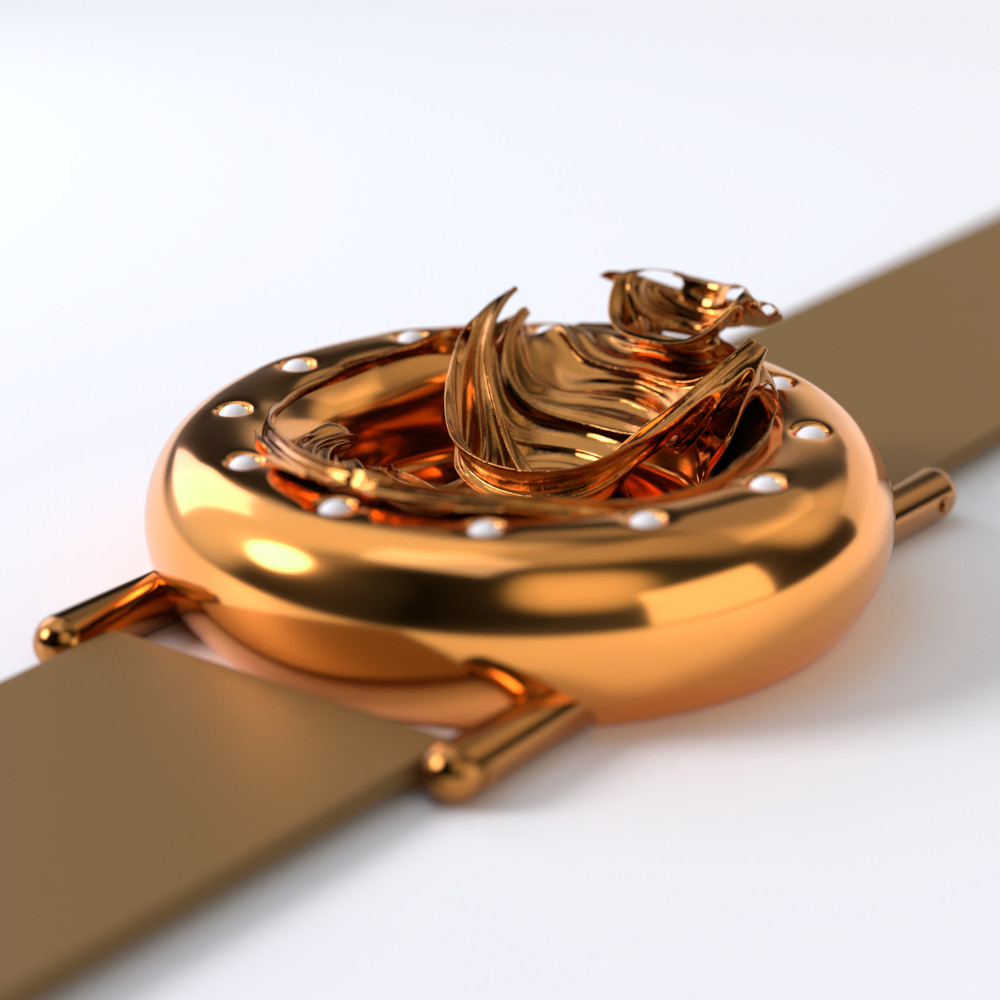
Whether they are luxury is, to some extent, a subjective opinion. I think overall most people would classify our watches as luxury, based on various relevant factors, yet they are clearly art, which, as I explained above, is not really a luxury.
Do you think UnconstrainedTime is a luxury British brand? Let us know your thoughts in the comments below.
Fractal Emergence (above) is the watch we’ll be launching with, so . . .
Don’t miss our launch!
Author: Chris Melchior

This article was authored by Chris Melchior, founder of UnconstrainedTime and creator of the original range of wrist-worn sculptures of this unique artistic adventure.
Chris has extensive knowledge and experience of creativity, including fine art and cutting-edge contemporary music composition, and was awarded a First Class Honours Degree in fine art and music with a minor in philosophy.
Chris’s life-long artistic obsessions include organic forms and textures, abstraction, fractals, and the aesthetic essence of musical genres.
He has developed unusually deep insights into the elemental concepts underlying areas including Eastern and Western philosophies, science and technology, creativity and the arts, as well as empirical spirituality in which he is acknowledged as a leading authority.
He has a profound fascination and love for the unique and synergistically creative combination of fine art with the ancient essence of time-keeping which evolved into the UnconstrainedTime project.

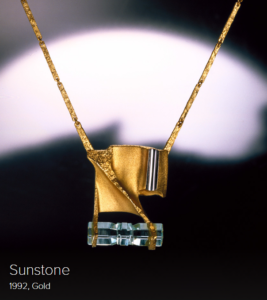
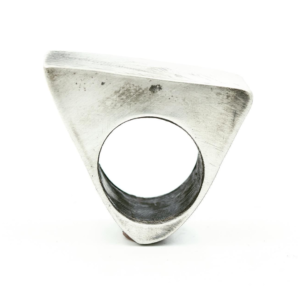
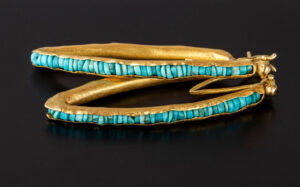
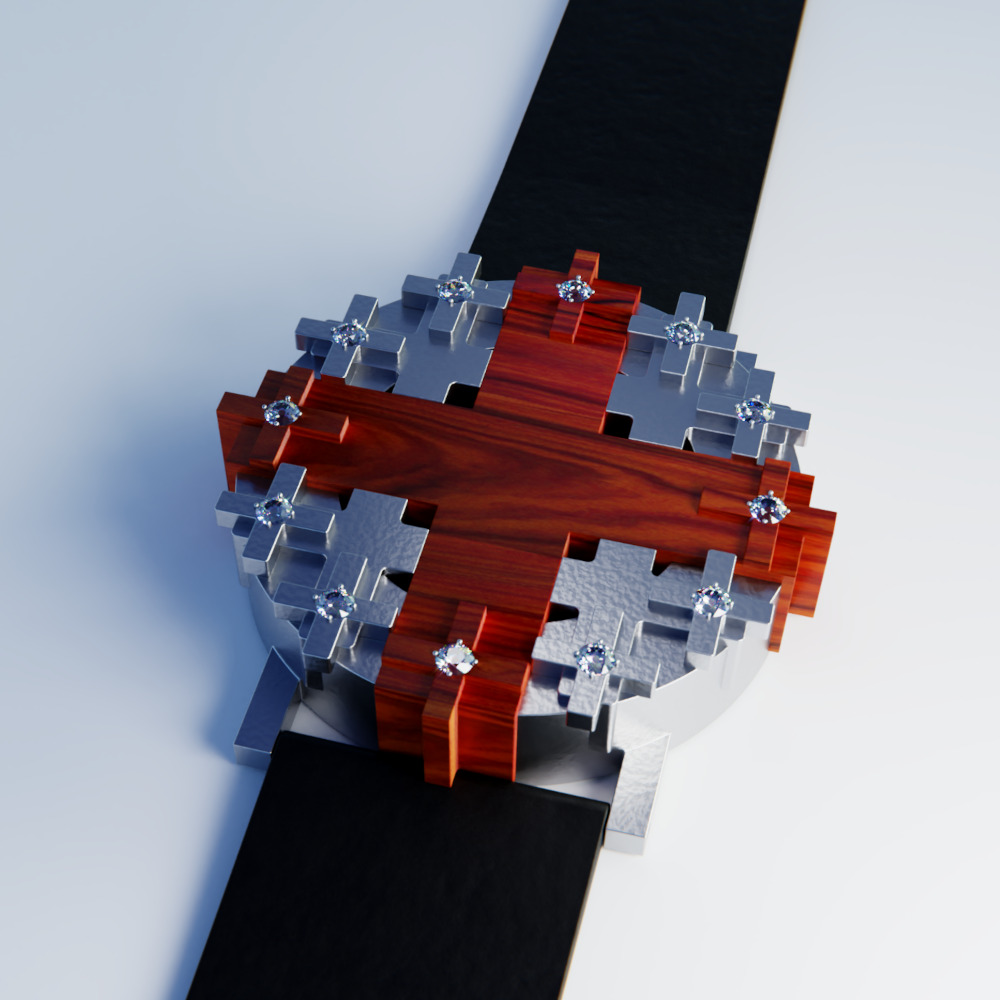

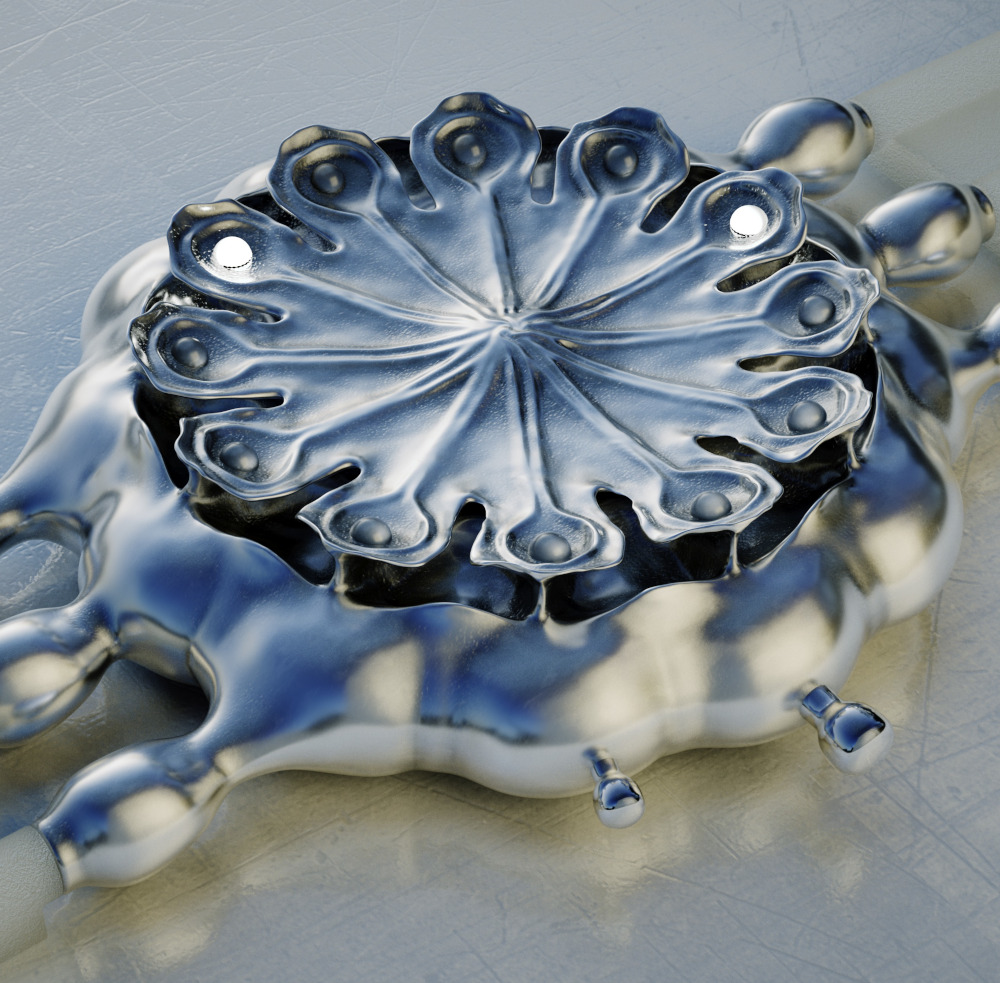
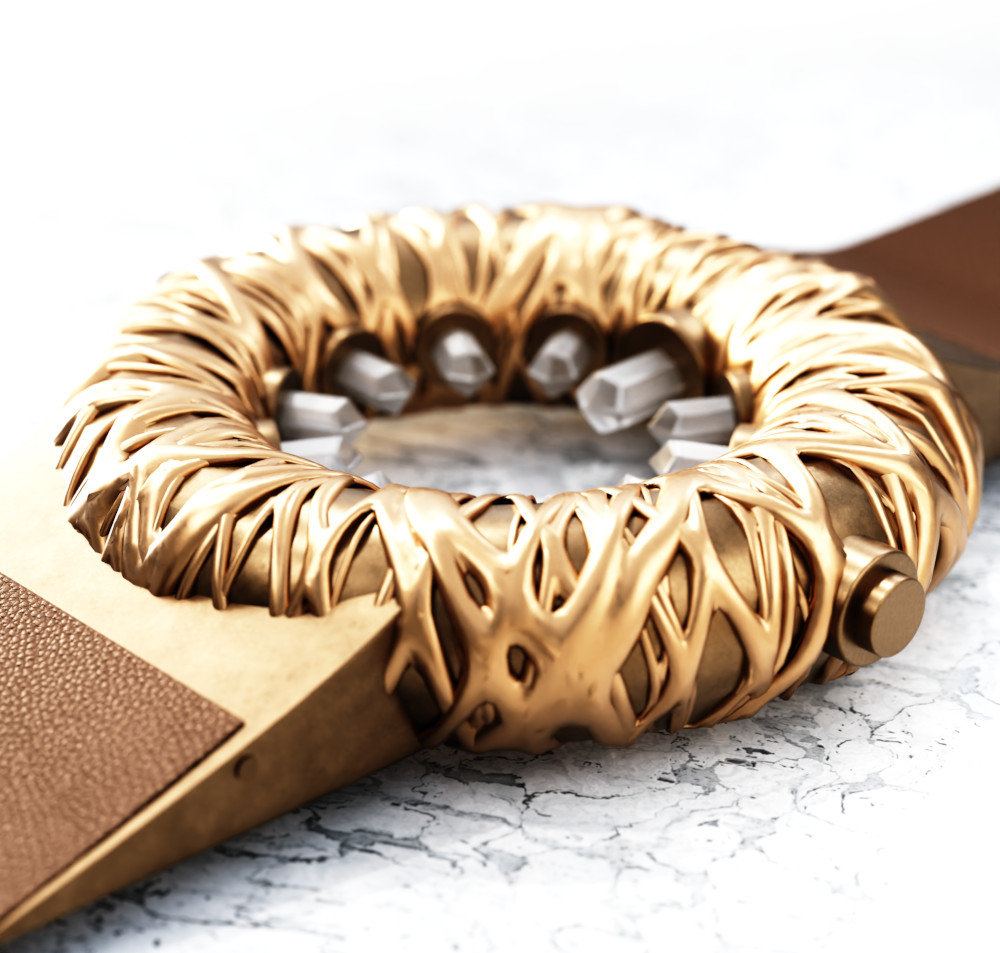
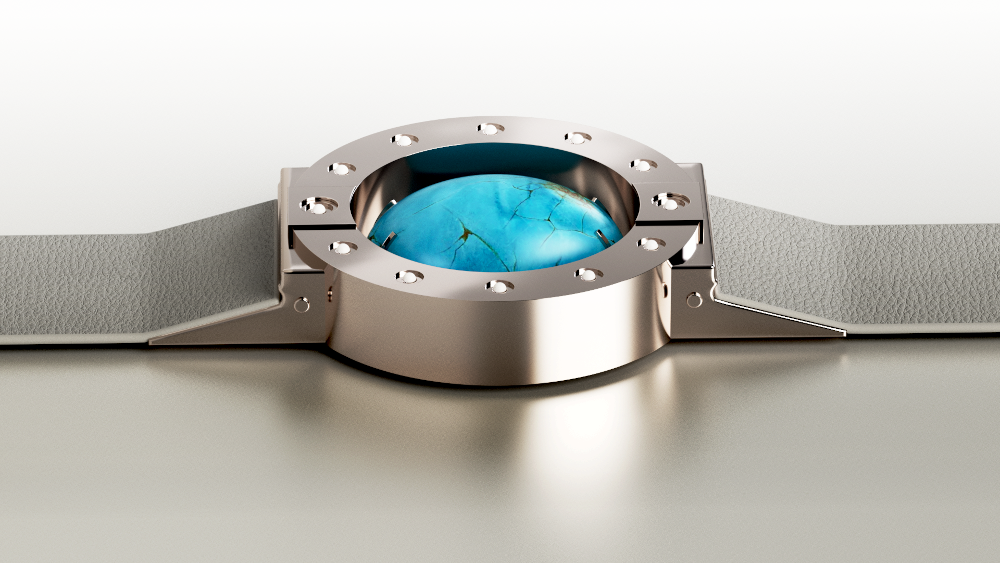

Leave a Reply